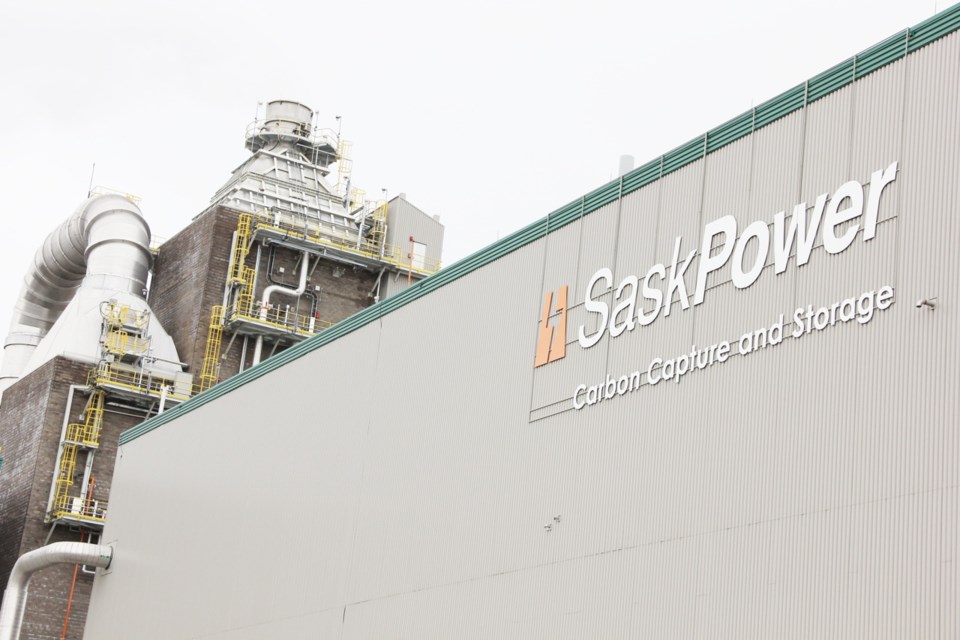For those who were lucky enough to be at the Boundary Dam Power Station on Oct. 2, 2014, it's a day we won't soon forget.
The much-hyped carbon capture and storage (CCS) facility at Boundary Dam came online, and the celebration was likely one of the biggest in Estevan's history. People came from all over to admire this technological marvel.
All that was missing was an appearance by former prime minister Stephen Harper, who had been in Estevan 6 1/2 years earlier to announce the federal government's commitment to CCS at Boundary Dam.
The past 10 years have been a roller coaster for the concept. The excitement of the first year – with all of the awards, accolades and tours – have worn off. Yes, we continue to see delegates visit Boundary Dam to view the project, but they aren't as common as they were in the first year or two.
Those first few years weren't easy, either. SaskPower was tasked with proving the technology. There were a lot of times in which either Unit 3 or the CCS facility was offline. Equipment had to be replaced to improve operations.
Critics of the Boundary Dam CCS project – many of whom want absolutely nothing to do with coal-fired power, no matter the innovations that have been made – were likely rubbing their hands gleefully at the malfunctions. They want to see coal out of the mix as a power source. (Of course, many of them naively think solar power is a viable baseload power source).
CCS has also had its successes. The facility has thrived since early 2022. The only prolonged outages from early 2022 to mid-2024 were for scheduled reasons, the sort of think that has to happen at every power plant, regardless of type.
In the first six months of this year, the CCS facility captured more than 473,000 tonnes of CO2, and as of June 30, it had captured more than 6.2 million tonnes of CO2 since coming online.
It is providing clean, baseload power to the people of Saskatchewan, and as a bonus, the captured CO2 is being sold to Whitecap Resources, an energy company that uses the CO2 for enhanced oil recovery efforts.
The day of the grand opening, Robert Watson, the SaskPower CEO of the day, stood before the massive crowd, huddled beneath a tent on a cold October day, and not only proclaiming that the project was online and that it worked, but SaskPower was getting paid for it. The crowd applauded.
The delegates toured Unit 3 at the Boundary Dam Power Station and the CCS facility. They were here because of this really cool project that was happening in our backyard. SaskPower was going to change the world of power production with what was happening at Boundary Dam, and it was going to happen in the Estevan area.
A couple of years later, the federal Liberal government announced that it was fast-tracking the end of conventional coal-fired power generation from 2042 to 2030, putting the future of coal plants in doubt, although BD3 would not be affected. Less than two years later, SaskPower revealed it would not retrofit Units 4 and 5 at the Boundary Dam Power Station with CCS technology because of the cost of the work; instead, the Crown corporation would opt for natural gas.
There's be talk of converting Shand to a natural gas facility with CCS, but the federal government's clean electricity standards, due to come into effect in 2035, have put those discussions on hold.
Perhaps the biggest downer for the facility is it has yet to be embraced on the global stage. Even though we've proven the technology works, and even though improvements continue to be made, this first-of-its-kind project in the world remains the only one of its kind in the world.
We don't know what the future will hold for CCS. If the Liberals have their way, it will have to be offline in 2035. If the coal mines shut down in 2030, then CCS could be shuttered even earlier.
But regardless of what the critics think, we know it works.





